Paleontology
-
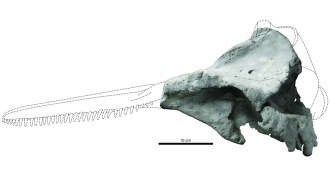 Paleontology
PaleontologyOldest true dolphin species gets a new name
A dolphin species first described in the 1970s has gotten a new name but still retains the title of oldest true dolphin species identified to date.
-
 Paleontology
PaleontologyDinosaurs could take tough breaks
Meat-eating dinosaurs may have survived some extremely bad bone breaks, according to detailed chemical maps of the fossils.
-
 Paleontology
PaleontologyLoblolly sets record for biggest genome
At 20 billion base pairs, the loblolly pine is the largest genome sequenced to date.
-
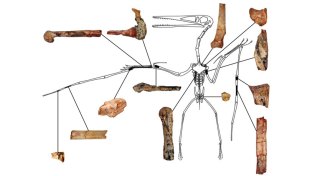 Paleontology
Paleontology‘Hidden dragon’ fossil is oldest flying reptile
Researchers have unearthed the oldest pterodactyl ever discovered: Kptodrakon progenitor soared over the Earth 163 million years ago.
By Meghan Rosen -
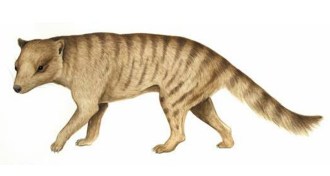 Animals
AnimalsLittle thylacine had a big bite
A reconstruction of the skull of a thylacine, an extinct, fox-sized Australian marsupial, reveals that the animal could have eaten prey much larger than itself.
-
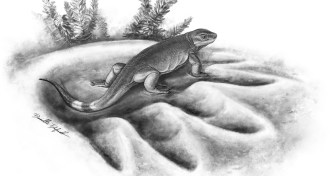 Paleontology
PaleontologyEarly meat-eater may have led to larger plant-eaters
The newly identified Eocasea martini may have set the stage for later, much larger animals to become plant-eaters.
-
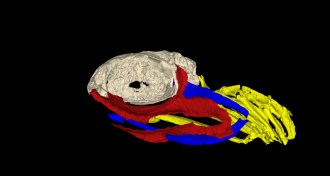
-
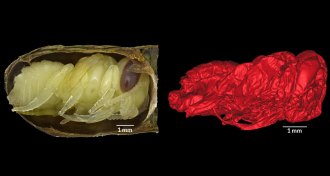 Paleontology
PaleontologyLa Brea Tar Pits yield exquisite Ice Age bees
Ancient bee pupae snug in leafy nest give clues to Pleistocene climate.
By Susan Milius -
 Paleontology
PaleontologyAncient crustacean had elaborate heart
The now-extinct Fuxianhuia protensa had a fancy cardiovascular system that sent blood to its limbs and organs, including its brain.
-
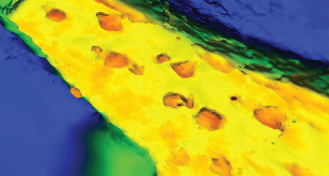 Paleontology
PaleontologyFootprints of dino chase digitally reconstructed
Footprints of a T. rex-type dinosaur chasing an Apatosaurus-like animal have been turned into a 3-D fly-through, giving researchers a way to verify maps of the tracks drawn 70 years ago. (includes video)
-
 Paleontology
PaleontologySea stars sighted predators 79 million years ago
Sea stars may have evolved complex lenselike structures to detect and evade predators at least 79 million years ago.
-
 Paleontology
PaleontologyMicrobes indicted in ancient mass extinction
About 252 million years ago an estimated 96 percent of all species were wiped from Earth, and now scientists have a new suspect in the killing — methane-belching microbes.